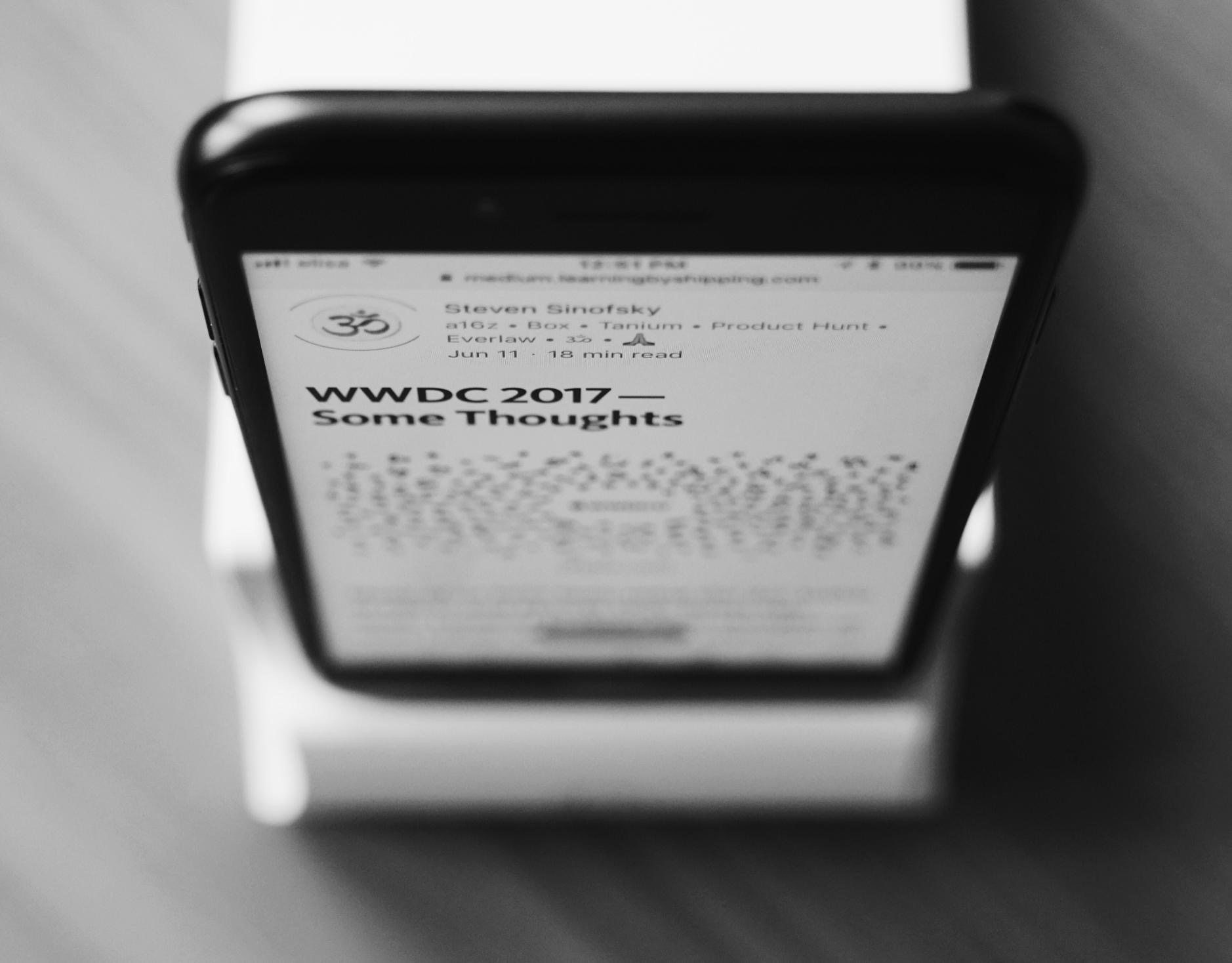„WWDC 2017 — Some Thoughts“

Steven Sinofsky, bis 2012 verantwortlich für die Windows Abteilung bei Microsoft, über Apples diesjährige WWDC:
Like many iPad users I’ve been surprised and disappointed at the pace of iPad hardware changes (as I’ve tweeted about often, iPad is my primary device in terms of hours of usage and where I do writing, financials, and slides, in addition to longer sessions of reading, social, etc.).
The software improvements in iOS11 already make using a 9.7” iPad Pro better. But nothing makes new software seem better than new hardware.
The nature of information or knowledge work (selling, marketing, product management, financials, planning, executing, and more) continue to undergo changes. These changes never happen over night and so many look to the pace of change to insist the change isn’t happening. At the same time, so much of the public dialog around work in technology is dominated by engineers and designers who can and should be using Mac or Windows PCs (and will continue to do so). That whole world is 50–100M people worldwide and isn’t likely to change for some time (until the scenarios completely change or those tools exist on an iPad).
The new iPad Pro looks is exciting and having had a chance to see one, I am certain that a broader set of people will tilt towards iPad only (assuming we can still fly on planes with iPads!). The typical knowledge worker will move to the iPad or some other device with ARM, mobile OS and those attributes sooner rather than later. The iPad gives us a big screen to accompany our phone sized screen.
Sieben Jahre nach Steve Jobs rhetorischer Frage: „Is there room between a phone and a laptop?“ verkaufte Apple im letzten Geschäftsjahr 45 Millionen iPads.
Das klingt viel. Das ist im Gegensatz zum Mac, der im gleichen Zeitraum 18 Millionen Geräte verkauft hat, auch bemerkenswert. Im Vergleich war das Jahr 2016 aber das zweischlechteste Ergebnis nach 2011 für die iPads (siehe Grafik).
iOS 11 und die neuen iPads werden das Ruder nicht von alleine herumreißen. Das müssen sie aber auch gar nicht. Solange das iPad weiter seine 30, 40 oder 50 Millionen Geräte pro Jahr verkauft, ändert sich unsere Computerlandschaft ganz von selbst.